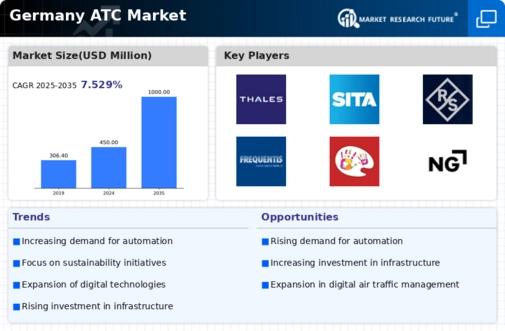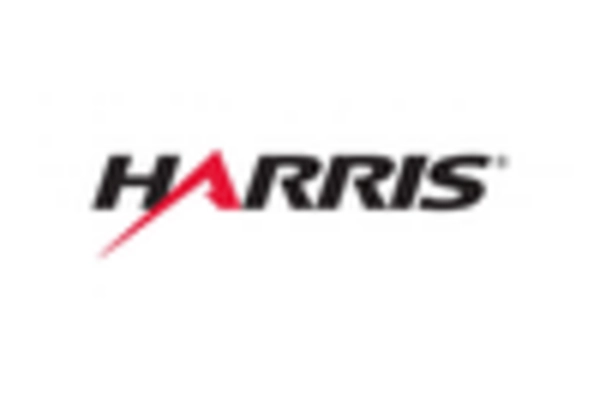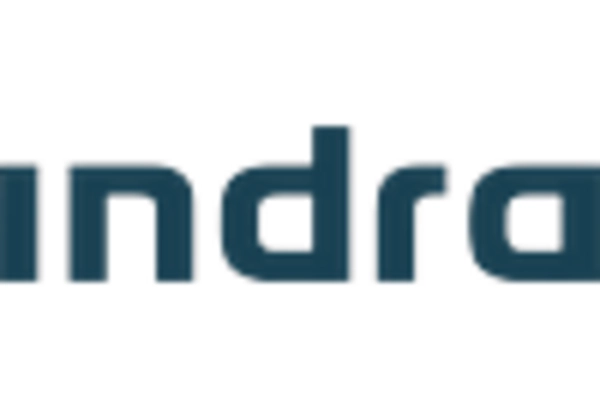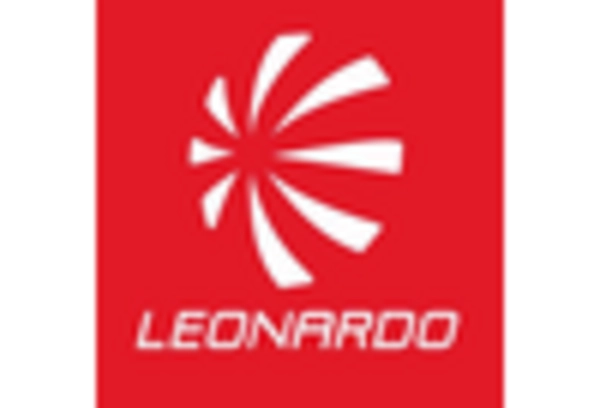Investment in Infrastructure
Investment in infrastructure is a pivotal driver for the atc market in Germany. The German government has recognized the necessity of modernizing its air traffic control systems to accommodate increasing air traffic volumes. In 2025, it is estimated that air traffic in Germany will grow by approximately 3.5% annually, necessitating substantial investments in both hardware and software solutions. This influx of capital is directed towards upgrading existing systems and implementing advanced technologies such as artificial intelligence and machine learning to enhance traffic management efficiency. Furthermore, public funding initiatives and private sector investments are likely to converge, creating a robust financial ecosystem that supports the growth of the atc market. This dual investment approach not only improves safety and efficiency but also positions Germany as a leader in air traffic management innovation.
Emerging Technologies Adoption
The adoption of emerging technologies is transforming the atc market in Germany. Innovations such as artificial intelligence, machine learning, and automation are being integrated into air traffic control systems to enhance operational efficiency and safety. In 2025, it is projected that approximately 40% of air traffic control operations will utilize AI-driven solutions, significantly reducing human error and optimizing traffic flow. This technological shift is driven by the need for more efficient management of increasing air traffic volumes, which are expected to rise by 3.5% annually. The integration of these technologies not only streamlines operations but also reduces costs associated with traditional air traffic management. As a result, the atc market is witnessing a paradigm shift, where technology plays a central role in shaping its future landscape.
Increased Demand for Air Travel
The atc market in Germany is experiencing increased demand for air travel, which serves as a crucial driver for market growth. As of 2025, the number of air passengers is projected to reach approximately 250 million annually, reflecting a robust recovery in the aviation sector. This surge in demand necessitates enhancements in air traffic control systems to ensure safety and efficiency. Airlines and airports are investing in advanced technologies to manage this growing passenger volume effectively. Consequently, the atc market must adapt to these changes by implementing innovative solutions that can handle the increased traffic while maintaining high safety standards. This growing demand for air travel not only stimulates investment in the atc market but also encourages the development of more sophisticated air traffic management systems.
Regulatory Compliance and Standards
The atc market in Germany is heavily influenced by stringent regulatory compliance and standards set by both national and European authorities. These regulations ensure that all air traffic control systems meet safety and operational efficiency benchmarks. As of 2025, the European Union Aviation Safety Agency (EASA) has mandated specific guidelines that impact the design and implementation of air traffic control technologies. This regulatory landscape drives innovation within the atc market, as companies strive to develop solutions that not only comply with these regulations but also enhance operational capabilities. The need for compliance can lead to increased operational costs, but it also fosters a competitive environment where companies are incentivized to innovate and improve their offerings. Consequently, adherence to these regulations is a critical driver shaping the future of the atc market in Germany.
Collaboration with Technology Providers
Collaboration with technology providers is emerging as a vital driver in the atc market in Germany. As air traffic control systems become increasingly complex, partnerships between air navigation service providers and technology firms are essential for developing innovative solutions. In 2025, it is anticipated that collaborative projects will account for over 30% of new system implementations in the atc market. These partnerships facilitate the sharing of expertise and resources, enabling the rapid development and deployment of advanced technologies. Moreover, such collaborations can lead to cost efficiencies and improved service delivery, as both parties leverage their strengths. This trend towards collaboration not only enhances the capabilities of air traffic control systems but also fosters a more dynamic and responsive atc market.

















Leave a Comment